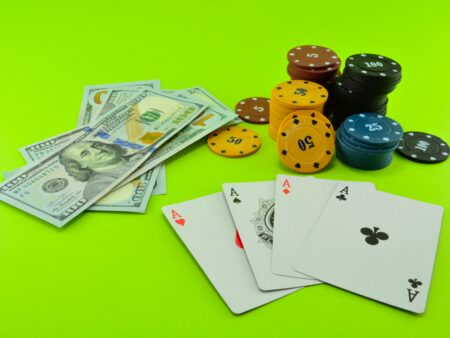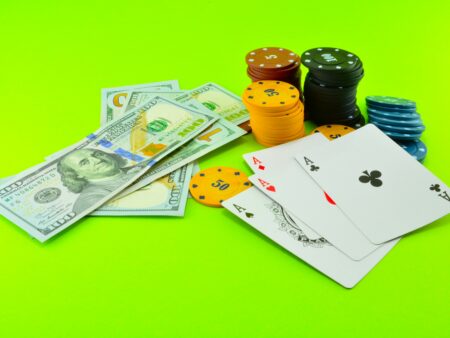Master the secrets of poker with our guide on Poker Math. Understand the basics of probabilities, odds, and expected values to make informed decisions and win big!
Poker Math: Essential Calculations for Informed Decision Making
‘You’ve got to know when to hold ’em, know when to fold ’em,’ the famous lyrics to that classic song by Kenny Rogers. I remember listening to that song on a balmy evening, trying to decipher the intricate world of poker. You ever find yourself in a similar situation? You, my friend, are not alone.
Did you know that beneath the surface of bluffs and tells, poker is fundamentally a game of mathematics? Surprised? Similar to our winning at blackjack guide, poker also has its number game.
Poker math, as we call it, is no rocket science, but a simple application of some basic concepts like probabilities, odds, and expected values. These are your weapons to make informed decisions at the poker table, and that’s exactly what we’re going to explore in this article.
Picture this: you’re in the middle of a high-stakes game, your heart pounding in your chest. You’ve got an okay hand – could be a winner, could be the biggest loss of the night. Do you go all in or fold? It’s decisions like these that separate the sharks from the minnows. Let’s say you decide to go all in, and you win. Luck? Maybe. But would you believe me if I told you that you just applied some fundamental concepts of poker math? Intriguing, isn’t it?
Let’s start with the concept of probabilities. In poker, you’re often required to estimate the likelihood of certain events, such as drawing a particular card to complete a strong hand. This is where your understanding of probabilities comes into play. A higher probability means a higher chance of occurrence, and vice versa. But remember, poker isn’t just about playing the odds; it’s about playing the players too.
“But how exactly do I calculate these probabilities?”, you might ask. Well, it’s simpler than you think. Just divide the number of ways a certain event can occur by the total number of possible outcomes. For instance, if you’re waiting for a spade to complete a flush and there are 9 spades left in the deck of 47 unseen cards, your probability of drawing a spade next is 9/47, or 19.15%.
Another crucial element of poker math is the concept of odds. In poker-speak, odds are typically expressed as “X to Y”, where X represents the instances of failure and Y signifies those of success. So, odds of 1 to 5 means that for every six attempts, you’re likely to succeed once and fail five times. Understanding this principle can help you make that crucial decision – to play or not to play.
Lastly, let’s talk about expected values. The expected value (EV) is a prediction of the average outcome if a specific decision were to be made in the same circumstances many times. If the EV is positive, it’s a profitable play in the long term. Conversely, if the EV is negative, it’s a losing play. Also, the larger the EV (positive or negative), the more impact the decision will have on your game.
Imagine you’re facing a $100 bet with a 20% chance of winning $500. Your EV would be calculated as (20% * $500) – (80% * $100), which equals $20. This means that over the long run, each time you make this play, you’re expected to average a profit of $20.
Poker indeed is a dance between luck and skill. While you can’t control the cards you’re dealt, you can control how to play them. By incorporating these mathematical concepts into your strategy, you’ll find yourself making more informed, confident decisions in the heat of the game. Who knows, you may even find yourself singing along to Kenny Rogers with a knowing smirk, understanding the complexity hidden beneath the simplistic lyrics.
Ready to try your hand at poker with your newfound knowledge? Remember, the only way to truly master the art of poker is to play and learn. So what are you waiting for? Go ahead, shuffle up and deal!










